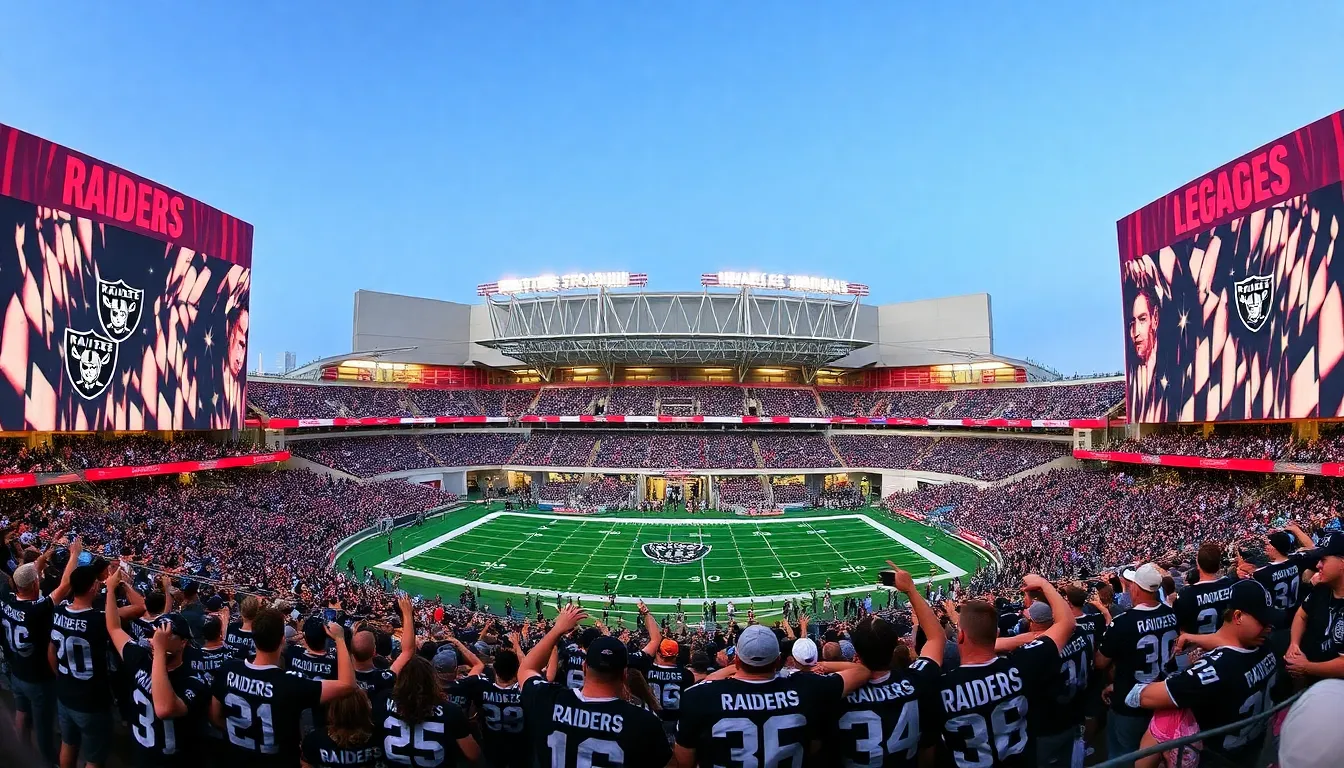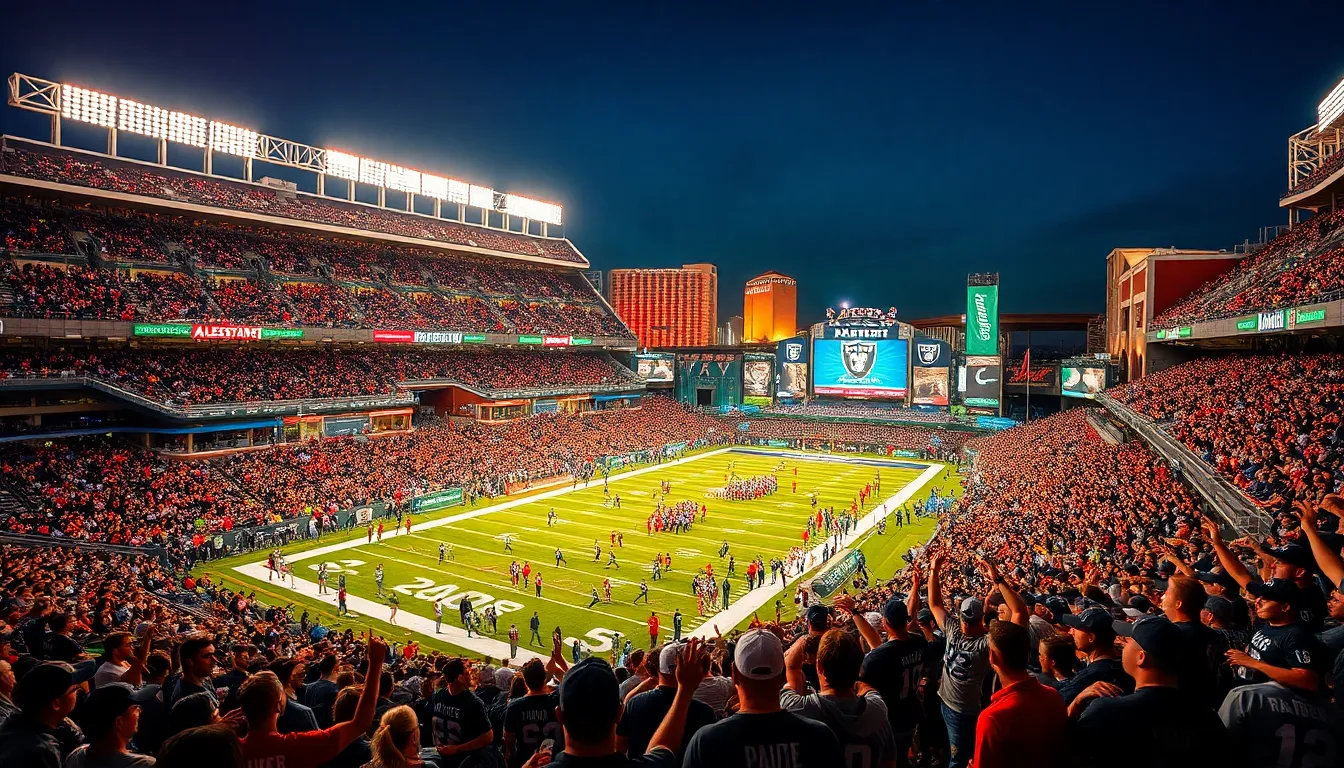The Las Vegas Raiders—sounds like a match made in heaven, right? Who wouldn’t want to watch a football game while surrounded by the glitz and glamour of the Strip? The journey to Sin City wasn’t a spontaneous decision; it was a calculated move that transformed the franchise’s future.
In 2020, the Raiders officially packed their bags and headed to Las Vegas, leaving behind their long-time home in Oakland. This bold relocation marked a new chapter for the team and its fans, blending the thrill of the NFL with the excitement of one of the world’s most vibrant cities. Join the ride as we dive into the details of this game-changing move and explore what it means for the Raiders and their loyal supporters.
Table of Contents
ToggleThe History of the Raiders
The Raiders’ journey began in 1960 in Oakland, California. Founded by businessman F. Wayne Valley, the franchise aimed to establish itself within the newly formed American Football League. A passion for football fueled their inaugural season, although the team faced struggles initially.
Origins of the Team
In 1960, the Raiders debuted as part of the AFL. The team’s first coach, Al Davis, played a crucial role in defining their identity. Led by Davis, the franchise quickly became known for its rebellious and competitive spirit. This distinct character attracted a dedicated fanbase, setting the stage for future successes.
Previous Locations
The Raiders experienced multiple relocations throughout their history. Initially based in Oakland from 1960 to 1981, the team moved to Los Angeles for 12 years. After returning to Oakland in 1995, they later relocated to Las Vegas in 2020. Each move shaped the team’s legacy and fan culture, highlighting their adaptability and resilience in the face of change.
The Decision to Move

The relocation of the Raiders to Las Vegas marks a pivotal point in the franchise’s journey. Several factors drove this decision, each contributing to a new chapter for the team.
Factors Influencing the Move
Owner Mark Davis sought new opportunities for revenue and fan engagement. While Oakland presented challenges such as stadium issues and fan base decline, Las Vegas offered a fresh market. The potential for increased attendance and corporate partnerships encouraged the move. Financial incentives from the Las Vegas authorities also played a crucial role, ensuring viability for the relocated franchise. Throughout these considerations, the yearning for a stable and modern venue consistently emerged as a priority.
Las Vegas as a Destination
Las Vegas emerged as an attractive city due to its vibrant tourism industry and entertainment options. As a global hotspot, it brings a diverse crowd and potential for game-day experiences. The city’s ability to host large events aligns well with the NFL culture. A new stadium, Allegiant Stadium, provides a state-of-the-art facility, equipped to enhance fan engagement. Additionally, the city’s reputation for hosting professional sports has only strengthened since the Raiders’ arrival. The integration into the Las Vegas community has begun creating an exciting atmosphere for both local and visiting fans.
Official Announcement
On March 27, 2017, the Las Vegas Raiders’ move became official when NFL owners approved the relocation. This decision signified a transformative moment for the franchise, as it marked a shift from Oakland to Las Vegas.
Timeline of Events
In January 2017, owner Mark Davis announced his intentions to relocate. By March, the NFL’s approval solidified this plan. Following the announcement, preparations began for the construction of Allegiant Stadium, which officially opened in 2020. Las Vegas welcomed its first regular-season Raiders game on September 21, 2020, marking the culmination of a multi-year journey. This timeline highlights a series of critical moments that reshaped the team’s future.
Key Individuals Involved
Owner Mark Davis played a central role in advocating for the relocation. NFL commissioner Roger Goodell provided necessary support during the approval process. Local leaders, such as Las Vegas Convention and Visitors Authority chairwoman Carolyn Goodman, emphasized the area’s potential benefits. Key investors and supporters also contributed significantly to financing the new stadium. Each individual’s efforts combined to facilitate the successful transition of the franchise.
The Move Process
The relocation of the Raiders involved multiple layers and strategic planning. Significant challenges arose during this transition, impacting both the team and its stakeholders.
Challenges Faced
Overcoming stadium issues dominated early discussions. Oakland’s aging Coliseum failed to meet modern standards, prompting frustration among fans. Financial constraints also posed obstacles; securing funding for a new venue in Las Vegas required extensive negotiations. Local opposition emerged as residents voiced concerns about the potential impact on traffic and the environment. Coordinating with the NFL, team officials faced hurdles in gaining approval for the relocation. Ultimately, the passage of time allowed for resolution of many initial concerns, paving the way for a successful transition.
Community Reactions
Community responses varied widely following the announcement. Many Las Vegans expressed excitement at the prospect of hosting an NFL team, eager to embrace the energy that professional football brings. Local businesses anticipated increased revenue, envisioning higher foot traffic during game days. Some longtime Raiders fans in Oakland, however, felt disappointment and betrayal, struggling with the loss of their team. Engaging with these differing sentiments, team management worked to foster positive relationships with both local residents and displaced fans. Their efforts included outreach programs and community events, aiming to integrate the Raiders into Las Vegas culture.
The Impact of the Move
The Raiders’ move to Las Vegas transformed the franchise and its relationship with fans. This shift instilled new energy, inviting fans to experience games in a vibrant, entertainment-centric environment. Fans from Oakland maintain strong ties, yet many eagerly embrace the fresh opportunities in Las Vegas. Engaging events and community programs help bridge this gap, fostering loyalty among both old and new supporters. Excitement around game days amplifies with the inclusion of local attractions, catering to diverse interests beyond just football.
On the Team and Fans
The relocation sparked a wave of enthusiasm among the fanbase. Raiders supporters in Las Vegas grew in number, drawn by the team’s historic legacy. Fresh connections formed, enhancing the community’s bond with the franchise. Local fan clubs emerged to support the team, establishing strong networks among followers. Daily events at Allegiant Stadium create an inclusive atmosphere, fostering camaraderie. Meanwhile, the challenge remains to keep long-time fans engaged despite geographical changes. Active outreach ensures that Oakland supporters feel valued and involved, reinforcing the Raiders’ commitment to their diverse fanbase.
Economic Effects on Las Vegas
The presence of the Raiders significantly boosted Las Vegas’s economy. Revenue from ticket sales, merchandise, and concessions soared after the team’s relocation. Job creation followed suit, with many positions opening at Allegiant Stadium and surrounding businesses. Local industries like hospitality and tourism experienced notable increases, further fueled by visitors attending games. Economic forecasts predict sustained growth due to the vibrant game-day experience drawing crowds year-round. This revitalization demonstrates how sports franchises can enhance city dynamics and contribute to overall prosperity.
The Raiders’ move to Las Vegas has marked a transformative chapter in the franchise’s history. This bold decision not only revitalized the team’s presence but also enriched the local community and economy. With Allegiant Stadium serving as a modern venue, fans now enjoy a unique game-day experience in a vibrant city.
As the Raiders continue to build their identity in Las Vegas, the integration into the community fosters a sense of belonging for both new and old supporters. The enthusiasm surrounding the team reflects the potential for long-term success and growth, ensuring that the Raiders remain a significant part of the Las Vegas landscape for years to come.





